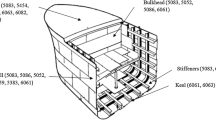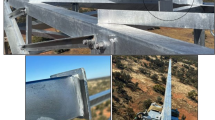Abstract
Case hardening is one of the most common heat treatment processes for highly loaded shafts and gears. Due to numerous investigations, a microstructure consisting of martensite with retained austenite (less than 30%) represents a high sustainable microstructure.
Besides this, there are some alternative microstructures compared to the commonly specified martensitic layer. The central question is how they influence the load carrying capacity of gears. A former research project was focused on the mechanical properties of carbonitrided parts by varying the amount of retained austenite. The investigations revealed that a microstructure containing a significantly increased amount of retained austenite can increase the flank load carrying capacity in comparison to standard case carburized gears. The tooth root bending strength was not influenced in a negative way.
A microstructure containing an increased amount of retained austenite can also be reached by gas carburizing. Furthermore, a variant containing bainite in the case hardened layer was adjusted. In an actual research project, the influence on the load carrying capacity of gears made out of the material 20MnCr5 was investigated in experimental test-runs, using spur gears. The results of the variants with alternative microstructure show some differences, e. g. in the hardness profiles, compared to results of standard case hardened gears. In comparison to the case hardened reference, the flank load capacity of the gears with the alternative microstructures showed increased flank load capacity numbers, whereas the tooth root bending fatigue was not influenced in a negative way.













Similar content being viewed by others
References
AGMA (1994) Fundamental rating factors and Caculation methods for involute spur and helical gear teeth. ANSI/AGMA 2101-C95. AGMA, Alexandria (2101-C95)
Bhadeshia HKDH (2007) The nature, mechanism and properties of strong bainite. Proceedings of the 1st International Symposium on Steel Science. vol. 2007. The Iron and Steel Institute of Japan
Dong J, Vetters H, Hofmann F, Zoch HW (2009) Microstructure and fatigue strength of the bearing steel 52100 after shortened bainitic treatment. J ASTM Int 7(2):1–10. doi:10.1520/JAI102511
Laukotka EM (2007) Referenzölkatalog. FVA-Heft-Nr. 660, Frankfurt am Main
Güntner C, Saddei P, Tobie T et al (2017) Alternative mehrphasige Randschichtgefüge beim Einsatzhärten zur Steigerung der Festigkeitseigenschaften von verzahnten Bauteilen. Abschlussbericht, IGF-Nr. 17903. AiF Arbeitsgemeinschaft industrieller Forschungsvereinigunge AiF, Köln
ISO 6336:2016 (2016) Calculation of load capacity of spur and helical gears – Part 5: Strength and quality of materials
Koller P, Schwienbacher S, Tobie T et al (2011) Flank – load – carrying capacity of case hardened gears with grinding burn. IDETC 2011 : ASME 2011 International Design Engineering Technical Conferences (IDETC) and Computers and Information in Engineering Conference (CIE), Washington DC.
Lombardo S, Steinbacher M, Tobie T et al (2011) Carbonitrieren von verzahnten Getriebebauteilen. Abschlussbericht, Forschungsheft Nr. 970. Forschungsvereinigung Antriebstechnik e. V., Frankfurt am Main ((AVIF A 235))
Sauter J, Schmidt I, Schulz M (1990) Einflussgrößen auf die Leistungsfähigkeit einsatzgehärteter Zahnräder. Härterei Tech Mitt 45:98–104
Tobie T, Oster P, Höhn B‑R (2001) Einfluss der Einsatzhärtungstiefe auf die Grübchen- und Zahnfußtragfähigkeit großer Zahnräder. Abschlussbericht, Forschungsvorhaben Nr. 271, Forschungsheft Nr. 622. Forschungsvereinigung Antriebstechnik e. V., Frankfurt am Main (IGF-Nr. 9880)
Tobie T, Oster P, Höhn B‑R (2003) Systematic investigation on the influence of case depth on the pitting and bending strength of case carburized gears. DETC 03, ASME, Design Engineering Technical Conference and Computers and Information in Engineering Conference, Chicago, pp 1–9 (Conference paper)
Vinokur BB et al (1978) Effect of retained austenite on the contact fatigue strength of carburized steel. Met Sci Heat Treat 20:927. doi:10.1007/BF00713758
Funding
The presented work was sponsored by the “Arbeitsgemeinschaft industrieller Forschungsvereinigung e. V. (AiF)”, by funds of the “Bundesministerium für Wirtschaft (BMWi, IGF no. 17903 N)” and with an equity ratio by the “Forschungsvereinigung Antriebstechnik e. V. (FVA)”. The results shown in this work were taken from results of the research project FVA 513 III “Randschichtgefüge”. More detailed information is given in the final report.
Author information
Authors and Affiliations
Corresponding author
Rights and permissions
About this article
Cite this article
Güntner, C., Tobie, T. & Stahl, K. Alternative microstructures and their influence on mechanical properties of case-hardened gears. Forsch Ingenieurwes 81, 245–251 (2017). https://doi.org/10.1007/s10010-017-0222-4
Received:
Published:
Issue Date:
DOI: https://doi.org/10.1007/s10010-017-0222-4




